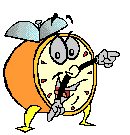What are the differences between FICTION and NON-FICTION?
 |
 |
The students noticed really wonderful text features of nonfiction books including photographs, table of contents, index, word list, and most importantly, that the books we thought were nonfiction had all real things in them. Last week, one student even saw that nonfiction books can teach us things!
 |
| When asked which book their group thought was fiction, they held up the books on the left. When asked which were nonfiction, they held up the books on the right. |
 |










